Edible flowers are a delightful way to add color, flavor, and visual appeal to both your garden and your plate. Plus, it’s easy to grow them yourself, making sure that you avoid harmful pesticides and chemicals. This article will guide you through growing and using various edible flowers so you can get the most out of your garden.
Plateful of Edible Blossoms
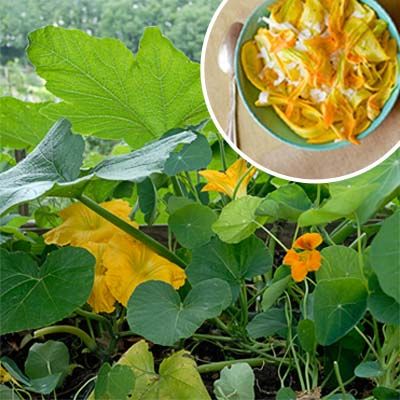
These vibrant blooms can be used to garnish salads, decorate desserts, or add a subtle flavor to various dishes.
Tasty Nasturtium
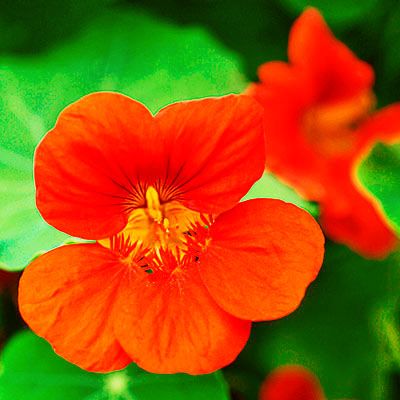
Nasturtiums are annual flowers that thrive in well-drained containers, making them perfect for small spaces or patio gardens. To grow nasturtiums, plant seeds about 2 inches deep in nutrient-rich soil. You can expect blooms in four to six weeks, rewarding you with bright, peppery-tasting flowers. These versatile blooms can be used in various culinary applications, from stuffing with herbed cream cheese to folding into omelets for a zesty kick.
To maximize your nasturtium harvest:
- Choose a sunny location for your container
- Harvest flowers in the morning when they’re at their freshest
- Pinch off spent blooms to encourage more flowering
- Put effort into watering regularly, but avoid overwatering
Luscious Lavender
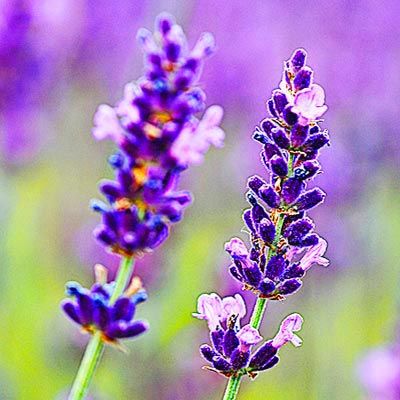
Lavender is a fragrant perennial that requires dry, well-drained soil to thrive. This aromatic herb is not only beautiful in the garden but also versatile in the kitchen. To use lavender in cooking, grind the dried buds into a fine powder. Mix one tablespoon of this lavender powder with two cups of superfine sugar to create a fragrant flavor enhancer for various dishes and beverages.
Some culinary uses for lavender include:
- Adding to lemonade for a floral twist
- Incorporating into whipped cream for desserts
- Infusing into simple syrups for cocktails
- Using in herb blends for savory dishes
Besides its culinary uses, lavender also offers calming properties and can be used in homemade beauty products such as soaps and essential oils.
Cornflowers that Taste Clove-Like
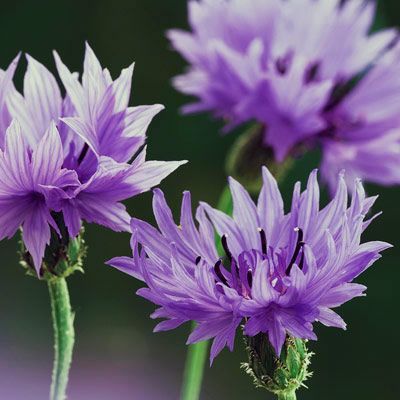
Cornflowers, also known as bachelor’s buttons, are annual flowers that prefer full sun exposure. To use cornflowers in cooking, remove the petals from the bitter center bud. The petals have an earthy, clove-like taste that pairs well with various dishes.
Try incorporating cornflower petals into:
- Herb butter for a unique spread
- Homemade ice cream for a subtle floral note
- Mixed green salads for a visual and taste contrast
- Pasta salads for added color and flavor
The brilliant blue petals of cornflowers not only make dishes visually appealing but also contribute antioxidants to your diet. Plus, adding them to your garden can attract helpful pollinators such as bees, which support overall garden health.
Delicious Daylilies
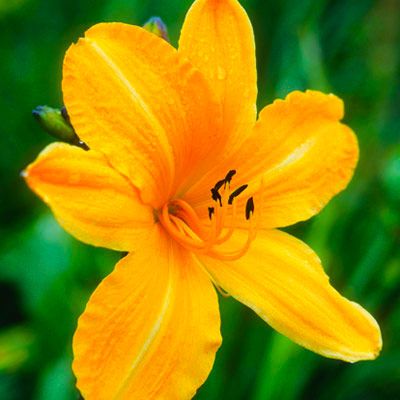
Daylilies are hardy perennials that flourish in full sun. These versatile flowers offer multiple edible parts, including buds, petals, and even young shoots. For the best flavor, opt for white, cream, or yellow varieties, as they tend to taste sweeter. When using daylilies in cooking, remove the bitter stamens from the center of the flower.
Some creative ways to use daylilies in your kitchen:
- Batter and fry whole flowers for a unique tempura dish
- Chop petals and add to stir-fries for color and texture
- Stuff closed buds with herbed cheese for an elegant appetizer
- Use the flower cups as natural serving vessels for chicken or tuna salad
Daylilies are also high in Vitamin C, making them a nutritious addition to your meals. Their varying textures and flavors provide endless culinary possibilities.
Delectable Portulaca
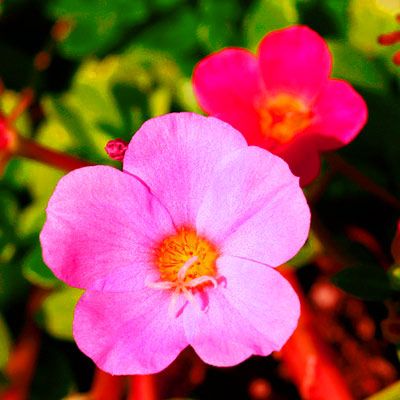
Portulaca, also known as purslane, is a drought-tolerant perennial that’s both beautiful and nutritious. This succulent plant is rich in omega-3 fatty acids, making it a healthy addition to your diet. The flowers, leaves, and stems are all edible and offer a slightly salty, spinach-like flavor.
Incorporate portulaca into your meals by:
- Adding chopped leaves and stems to soups for a natural thickener
- Blending into green smoothies for added nutrition
- Tossing fresh leaves into mixed green salads
- Using as a garnish for seafood dishes
Due to its robust nature, portulaca requires minimal care and can thrive even in less-than-ideal soil conditions. Its versatility in the kitchen makes it a valuable plant to grow, given its health benefits and its many uses in your cooking.
Mild Violets
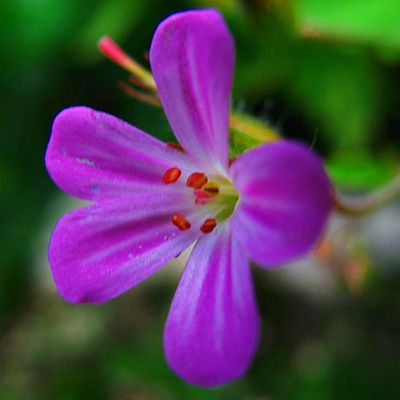
Violets are delicate spring annuals that prefer full sun but cooler temperatures. These charming flowers add a touch of whimsy to your garden and can be used to create stunning culinary presentations. Their sweet scent and mild flavor make them a lovely addition to both savory and sweet recipes.
For the best results, plant violets in compost-rich soil and avoid commercial fertilizers.
Here are some ways to use violets:
- Add fresh petals to spring salads for color and a mild, perfumed flavor
- Candy the petals for elegant cake decorations
- Freeze whole flowers in ice cubes for a festive touch to drinks
- Steep dried petals in hot water for a soothing herbal tea
Versatile Pansies
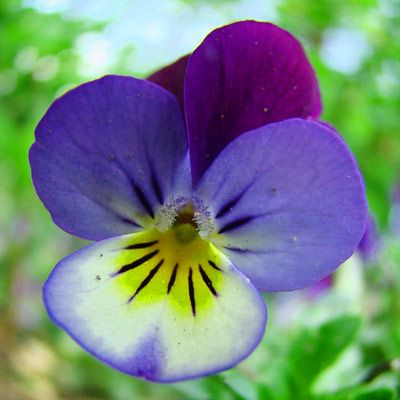
Pansies are colorful annuals closely related to violets, sharing similar growing conditions. These large, vibrant flowers are perfect for adding visual appeal to desserts and salads. Pansies have a mild, grassy flavor with hints of wintergreen, making them versatile in both sweet and savory dishes.
Experiment with pansies in your cooking by:
- Candying whole flowers for stunning cake decorations
- Floating whole flowers in clear cocktails or punch bowls
- Pressing fresh petals onto cookies before baking
- Scattering petals over a mixed green salad for a pop of color
Growing pansies can also enhance your garden’s biodiversity, attracting beneficial insects.
Flavorful Lilac
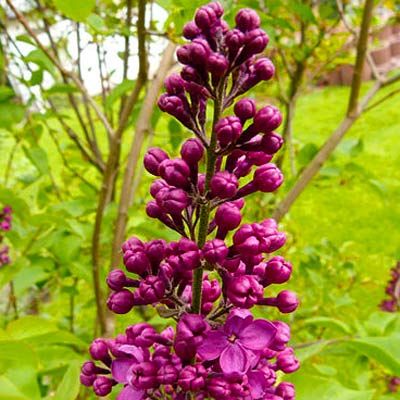
Lilacs are fragrant woody shrubs that produce clusters of small, intensely aromatic flowers. When using lilacs in cooking, be sure to collect organic, pesticide-free blossoms and remove all green parts. The purple petals offer a strong floral flavor that can enhance various dishes.
Incorporate lilac blossoms into your culinary repertoire by:
- Folding petals into scone or muffin batter for a floral twist
- Infusing simple syrup for use in cocktails or desserts
- Using to flavor homemade jams and jellies
- Sprinkling over ice cream or sorbet for an elegant dessert
Satisfying Squash Blossoms
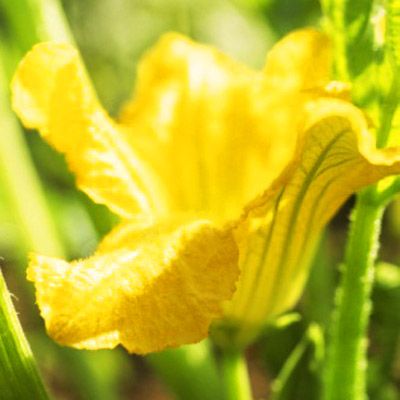
Squash blossoms are the edible flowers of various squash plants, including zucchini and pumpkin. Harvesting these blossoms before they open into full flowers can help control your squash plant’s production while providing a delicious ingredient for your kitchen.
Try these culinary applications for squash blossoms:
- Battering and frying for a delicate tempura
- Chopping and adding to pasta dishes or risottos
- Stuffing with herbed ricotta and lightly frying
- Using as a colorful garnish for summer soups
Unique Bee Balm
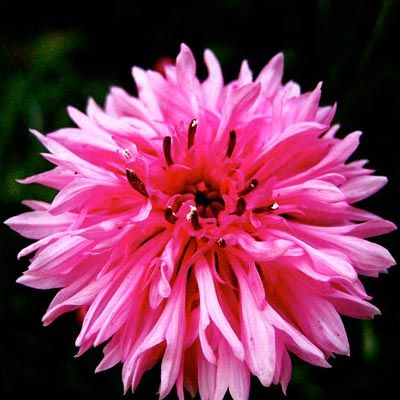
Bee balm, also known as wild bergamot, is a versatile perennial that attracts pollinators like bees and butterflies to your garden. When planting bee balm, choose a variety resistant to powdery mildew and check for good air circulation around the plants. Both the flowers and leaves of bee balm are edible, offering a unique flavor profile.
Incorporate bee balm into your culinary creations by:
- Adding fresh petals to fruit salads for a citrusy kick
- Infusing vinegar with dried flowers for a flavorful salad dressing
- Steeping dried leaves in hot water for a refreshing herbal tea
- Using fresh leaves as a substitute for oregano in savory dishes
Bee balm is also beneficial for your health, providing antimicrobial properties and rich herbal flavors.
